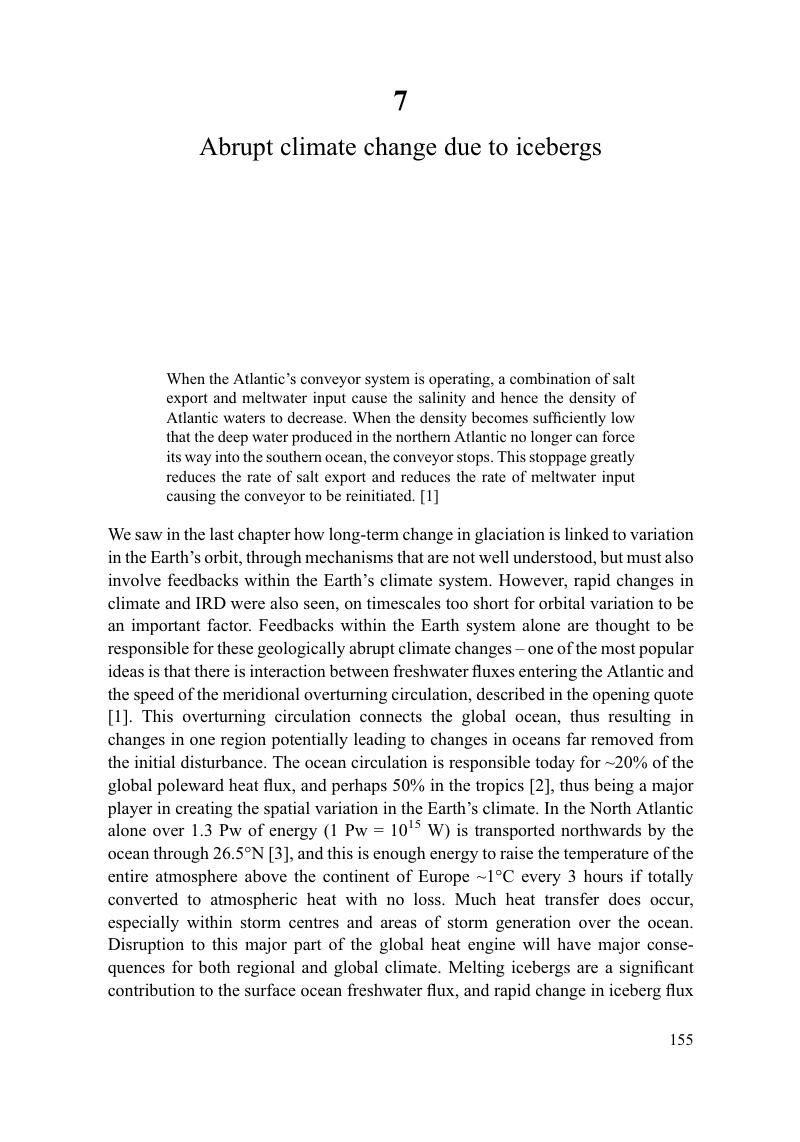Book contents
- IcebergsTheir Science and Links to Global Change
- Icebergs
- Copyright page
- Contents
- Preface
- Book part
- 1 Appointment with the Titanic
- Part I The science of icebergs
- Part II Icebergs and their impacts
- 6 Icebergs and past climates
- 7 Abrupt climate change due to icebergs
- 8 Iceberg risk
- 9 Icebergs: a freshwater source?
- 10 Icebergs and the future
- Index
- References
7 - Abrupt climate change due to icebergs
from Part II - Icebergs and their impacts
Published online by Cambridge University Press: 05 December 2015
- IcebergsTheir Science and Links to Global Change
- Icebergs
- Copyright page
- Contents
- Preface
- Book part
- 1 Appointment with the Titanic
- Part I The science of icebergs
- Part II Icebergs and their impacts
- 6 Icebergs and past climates
- 7 Abrupt climate change due to icebergs
- 8 Iceberg risk
- 9 Icebergs: a freshwater source?
- 10 Icebergs and the future
- Index
- References
Summary

- Type
- Chapter
- Information
- IcebergsTheir Science and Links to Global Change, pp. 155 - 181Publisher: Cambridge University PressPrint publication year: 2015



